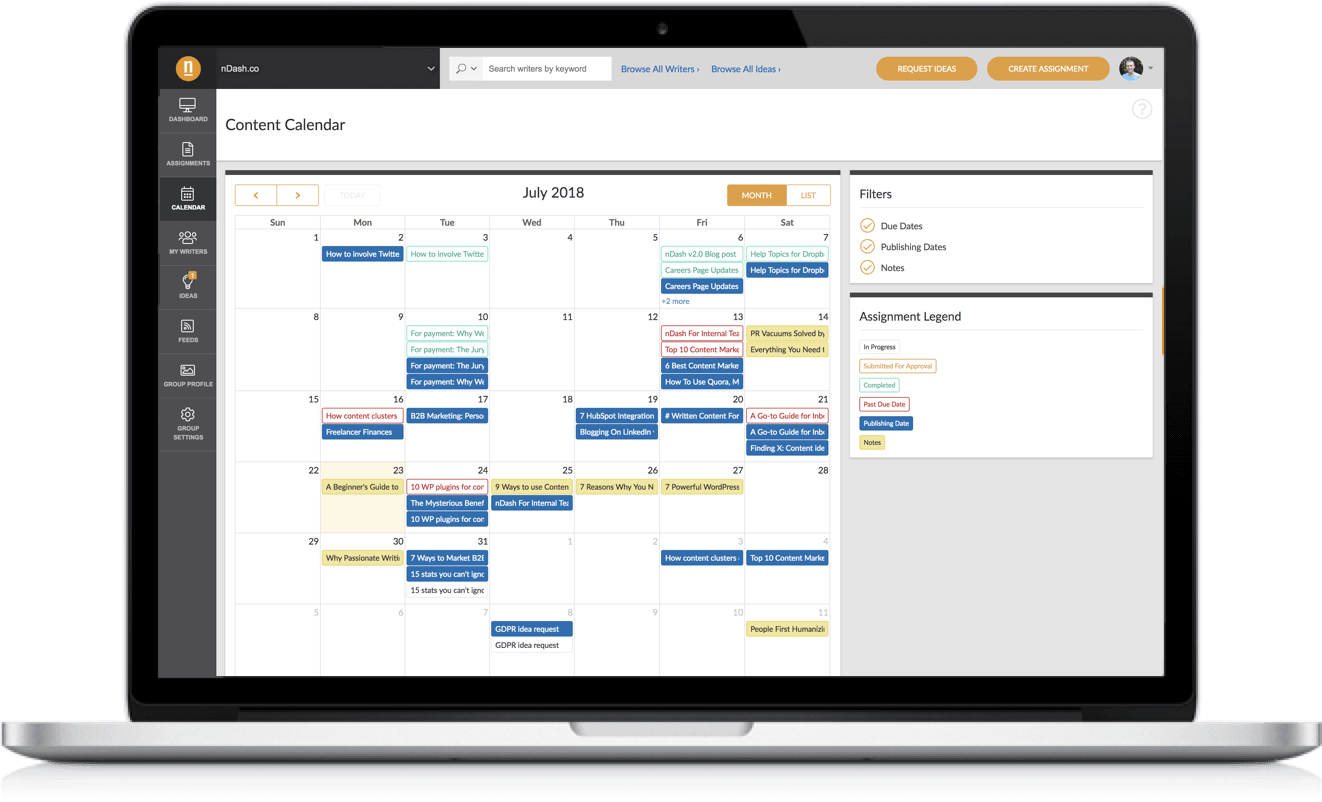We talk a lot about the importance of a content community—that group of in-house writers, freelancers, and influencers that makes your content creation process much smoother.

But if there’s one thing we’ve learned from nDash customers, it’s that crafting the perfect content community isn’t something you can do overnight. When you’re starting as a small (or even one-person) content team, the path to an ideal community may seem daunting.
You need a place to start. A rock to serve as the foundation for your content community. And there’s no better option than your own employees.
Why Employees Are So Valuable in a Content Community
Unless you’re working at a media company, you probably don’t have a large staff of writers dedicated to content creation. But when we talk about including in-house writers in a content community, it’s not limited to dedicated writers—it can be any employee in your organization.
However, recent research from Databox shows that most companies aren’t tapping into the potential of employees for content creation. For 67% of respondents, there are between 1 and 5 people creating content on behalf of their companies.
While there’s nothing wrong with having a small team, there are a few key problems that become roadblocks as you try to ramp up your content marketing:
- Time: For 71% of Databox respondents, time is the biggest challenge in getting employees to create content.
 Employees may want to contribute but can’t find space in their schedules to deliver consistently. If you’re trying to scale content marketing, bandwidth issues can quickly derail any editorial calendar.
Employees may want to contribute but can’t find space in their schedules to deliver consistently. If you’re trying to scale content marketing, bandwidth issues can quickly derail any editorial calendar. - Authority: What happens when your small team of content creators doesn’t have the subject matter expertise to cover an important topic? Without a deeper pool of employees involved, you might end up publishing something that barely scratches the surface of the topic and falls short of audience expectations. To increase authority, you need a more diverse set of voices involved in creation.
- Volume: Databox found that 87% of marketers wished people at their companies would create more content. And 90% said that crowdsourcing content across their company has had a positive business impact. Effectively creating more content isn’t about getting a small team to squeeze more work into the day—it’s about getting more employees involved in the process.
Many content marketing managers will immediately turn to freelancers to address these issues. Freelancers play a key role in your content community—but you need employees to form the foundation first.
No one knows your company’s mission, positioning, and competitive advantages the way your employees do. That gives them a base of knowledge that can result in significantly more effective content.
And better yet, you can find a wide variety of subject matter expertise as you pull different departments into content creation. While marketers might focus on top-of-funnel branding, your sales team can address specific customer questions, and the engineering team can provide more insight into the technical side of things.
But there’s just one problem—how do you get employees to buy into your content community?
How to Get Employees More Involved in Content
Databox is one company that is pioneering the content community model. And to learn more about how others are using the model, Databox asked 52 marketers for insights into employee involvement in content creation.
No matter what stage of the process you’re at, the challenge is the same—getting employees to contribute to your content alongside their primary responsibilities.
After reading through Databox’s findings, here are a few of our favorite tips for bringing employees into content creation:
- Focus on Value-Adds: Getting employees involved can increase both the quantity and quality of your content. But to get employees involved, they have to understand how contributing will benefit their primary positions. For engineers, an in-depth blog post might cut down on the time it takes to explain how your product
 works. For sales, content can help fill the pipeline more consistently.
works. For sales, content can help fill the pipeline more consistently. - Make It Easy: Don’t be too strict with your expectations. Not every employee will be comfortable as a writer—let them give a brain dump and use a ghostwriter to get the article published. Not every employee will make content a top priority—create a routine for ideation and set reasonable due
dates well in advance. - Keep Them Involved: Employees will get more excited about content creation when they’re involved beyond the writing process. Let them know how their articles have performed and how they’ve driven business results. The more they see that their work is making a difference, the more they’ll want to contribute as the content community matures.
Final Thoughts on Creating the Ideal Content Community
In a perfect world, these steps would help you create the ideal content community, complete with all the resources and subject matter expertise you need to get results.
But the reality is that there will always be gaps in a content community made solely of employees. Even if employees want to contribute, content creation will always be a second priority to their main responsibilities. And that will inevitably create holes in your editorial calendar.
Build the foundation of your content community with employees from as many departments as you can get. Then, take advantage of freelancers and influencers to fill the gaps that could hold your content marketing back.
It might take some time to get employees excited about content creation. But once you do, you’ll be well on your way to creating the perfect content community.
